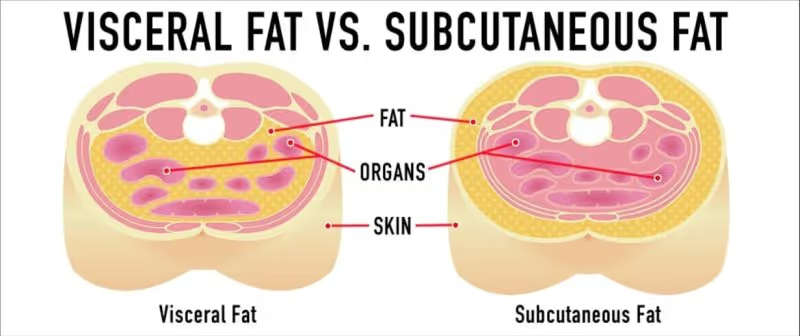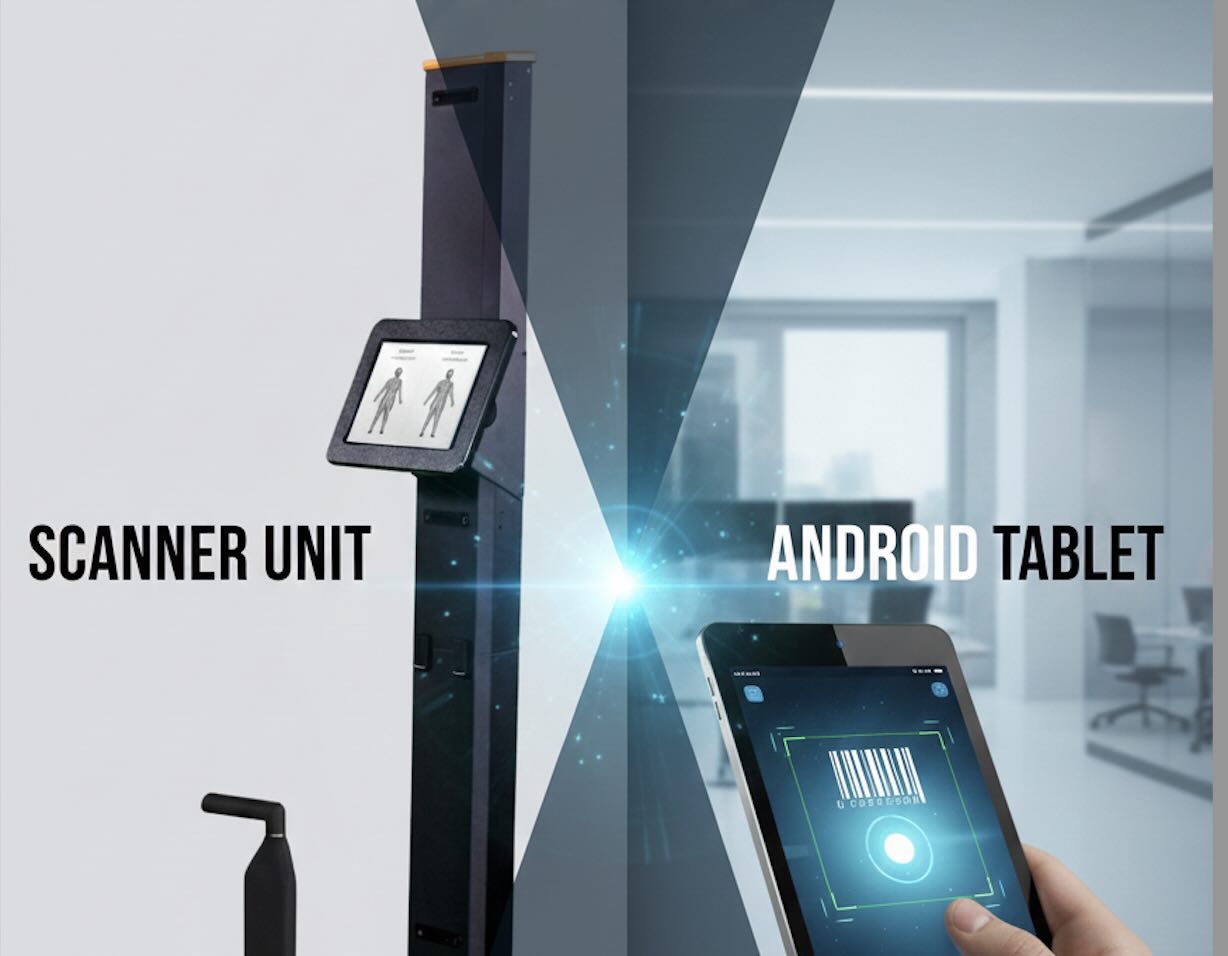
Visceral Fat Measurement
As a player in the body composition space, one question we get a lot is Why don't you have a feature that measures Visceral fat?
Well, the answer is that it's impossible.
Many of our competitors have a measurement of visceral fat because they want to sell you a system. Our belief is that since it's technically impossible to measure, why would we represent something that we couldn't back up & give you a prediction on top of a prediction? It just didn't seem right. Let me explain a bit more.
There are two main kinds of fat in the body: subcutaneous fat and visceral fat. Subcutaneous fat is the type of fat you can see and feel under your skin – it's what makes your skin a bit squishy. On the other hand, visceral fat is the hidden fat that wraps around important organs inside your belly, like your liver and intestines.
Visceral fat is a type of fat tissue that accumulates deep within the abdominal cavity, surrounding vital organs such as the liver, pancreas, and intestines. Unlike subcutaneous fat, which lies just beneath the skin, visceral fat is located within the abdominal cavity, making it less visible but potentially more detrimental to health. This type of fat is metabolically active and can release various substances into the bloodstream, including inflammatory cytokines and hormones that can disrupt normal metabolic processes. Its excessive accumulation has been linked to a higher risk of several health issues, including type 2 diabetes, heart disease, and certain types of cancer. Due to its proximity to important organs and its role in metabolic disruption, visceral fat is considered a key factor in understanding the relationship between obesity and chronic diseases.
Measuring visceral fat accurately poses challenges due to its deep internal location. Unlike subcutaneous fat, which can be measured using tools like skinfold calipers or bioelectrical impedance, visceral fat requires more advanced imaging techniques. Techniques such as magnetic resonance imaging (MRI) and computed tomography (CT) scans are capable of visualizing visceral fat accurately, but these methods are costly, often time-consuming, and involve exposure to ionizing radiation in the case of CT scans. Even these are technically really good predictions, with assumptions of their own. Additionally, other methods like waist circumference and waist-to-hip ratio provide indirect estimates of visceral fat, but they don't differentiate between visceral and subcutaneous fat. The complex nature of visceral fat's distribution within the body, coupled with the limitations of current measurement techniques, makes accurately assessing and monitoring visceral fat challenging for both researchers and clinicians.
Why do people care about Visceral Fat?
Visceral fat is an indicator of potential health risks. Its accumulation is linked to an increased risk of various health problems, including type 2 diabetes, heart disease, high blood pressure, and certain types of cancer. This type of fat is metabolically active and releases substances that can negatively affect how your body functions, contributing to inflammation and insulin resistance. Monitoring and managing visceral fat levels can provide insights into an individual's overall health and their susceptibility to chronic diseases.
So what is Fit3D doing to measure or speak to this same overall metric?
We came up with a new metric we're calling Body Shape Rating which compares certain body ratios to the people who have those specific health concerns related to Visceral fat readings. Thus, we found a new connection to get you to the health metric you really wanted to begin with.
The Body Shape Rating (BSR) by Fit3D is a comprehensive assessment that involves several measurements like SBSI, ABSI, Trunk to Leg Volume Ratio, body fat percentage, and BMI, derived from over 26,000 body scans. Fit3D then investigated the connections between each of these measurements and calculated their weighted values concerning health risk outcomes across their entire user base. This process yields a Body Shape Rating, or BSR, allowing users to gauge how their body shape and well-being compare to others using the Fit3D platform.
Here are 3 research articles that speak to this deeper.
- http://journals.plos.org/plosone/article?id=10.1371/journal.pone.0039504
- http://journals.plos.org/plosone/article?id=10.1371/journal.pone.0144639
- http://journals.plos.org/plosone/article?id=10.1371%2Fjournal.pone.0068716
To enhance your BSR, the key approach involves increasing body density, building leg muscle, and reducing waist circumference. Achieving this requires a balanced combination of proper nutrition and regular exercise. Collaborating with professionals like trainers, nutritionists, coaches, or doctors is recommended to create a tailored plan that aligns with your goals.

Conclusion
We don't try & measure Visceral Fat because you can't from an anatomy perspective. We found another solution to get's you the indicator you were looking for in terms of health. If you want to hear more about what we do at Fit3D, schedule a demo with us








